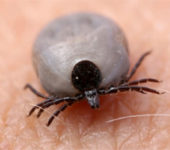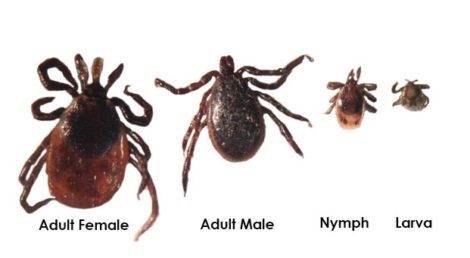
Posted On:
Category: Category:
Alternative EarthCare and the Blacklegged Tick and 5 Reasons for Organic Tick Control on the Eastern End of Long Island
Alternative EarthCare and the Blacklegged Tick and 5 Reasons for Organic Tick Control on the Eastern End of Long Island
February 26, 2019 Long Island, NY
Alternative EarthCare has been providing quality residential and commercial services across Long Island, New York since 1996. Specializing in mosquito, flea, and Hamptons tick control service, traditional lawn services (including aeration and seeding), irrigation system services, tree removal and pruning, and Christmas and holiday light installation, the team of professionals successfully caters to your needs in the least toxic, most organic way possible.
The blacklegged tick, also known as the deer tick, is arguably the most dangerous of the tick species, and sadly, it’s very prevalent on Long Island’s east end. The blacklegged tick transmits a host of dangerous illnesses, stays active year-round, and causes good reason to obtain tick treatments. Organic tick control methods offer comparable protection to that of synthetic treatments without the dangerous chemicals. Alternative EarthCare discusses the blacklegged tick and five reasons for organic tick control on the east end.

- Blacklegged ticks transmit Lyme disease Lyme disease is plaguing the island. The disease is so rampant and causes so many symptoms, including many that we are still unsure of, that often when people experience an unidentified medical issue, Lyme disease is looked at as a probable culprit. Lyme disease is often accompanied by a circular rash, but not always. Lyme causes issues such as fevers, head, muscle, and joint pain, heart palpitations, nerve pain, breathing difficulty, dizziness, and severe symptoms such as swelling of the joints, memory problems, facial palsy, and inflammation of the brain and spinal cord.
- Blacklegged ticks transmit the Powassan Virus The Powassan virus is dangerous in part because of the areas of the body it tends to attack. In mild cases, sufferers can exhibit flu-like symptoms, but in severe cases, the illness can attack the central nervous system causing a host of problems, some of which are life-threatening. The POW virus can lead to encephalitis and meningitis. Neurological issues caused by the Powassan virus include confusion, loss of coordination, seizures, memory difficulties and speech difficulties. Half of POW survivors experience permanent damage such as recurrent headaches, memory issues, and loss of muscle.
- Blacklegged ticks transmit babesiosis From a symptom perspective, babesiosis is similar to malaria. Milder symptoms consist of muscle, joint, abdominal, and head pain, coughing, vomiting, sore throat, light sensitivity, and eye irritations such as pink eye. More severe issues include weight loss, depression, enlarged liver, jaundice, neutropenia, pharyngeal erythema, enlarged spleen, and advanced eye problems such as retinopathy and retinal infarcts.
- The tick issue is a compounding problem Each year, the tick populations on Long Island get denser. It has gotten so that residents cannot take advantage of all the wonderful outdoor activities on the island due to tick infestations in wooded and grassy areas as well as in beach dunes. Just like populations in public outdoor areas are exploding, properties left untreated can experience massive infestations as well and sadly, those infestations can make their way inside of resident’s homes. By obtaining professional organic treatments each year, homeowners will see year over year improvements in tick populations. Consistent treatments are the key to minimizing ticks on properties.
- Organic treatments offer effective coverage with no harsh chemicals Organic treatments are available in spray form as well as in non-spray options such as permethrin treated tick-tubes. While organic sprays and tick-tubes minimize tick populations on the property’s vegetation, lawns, around property borders, and from rodents and their dens, they do so without harsh chemicals.










